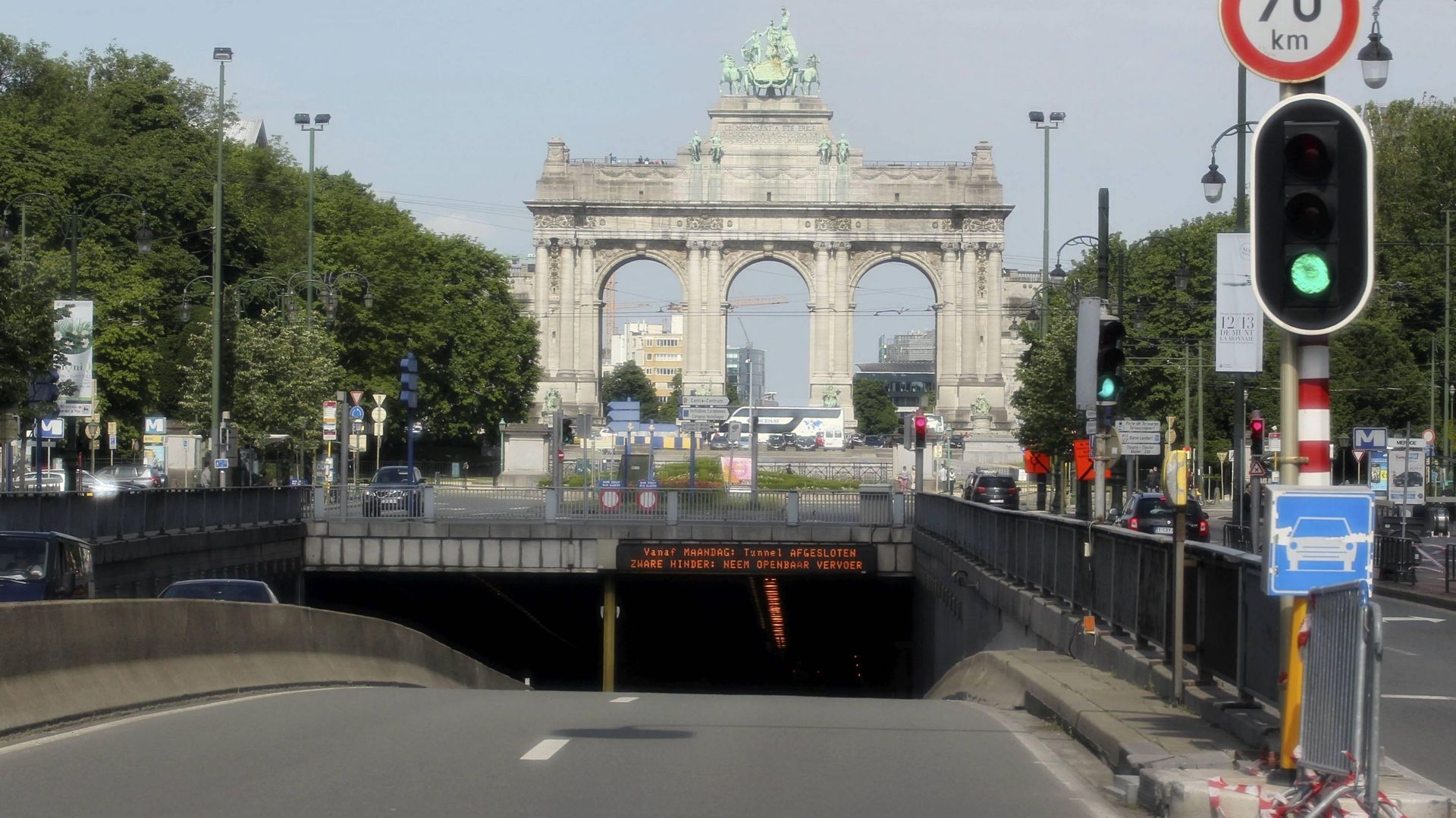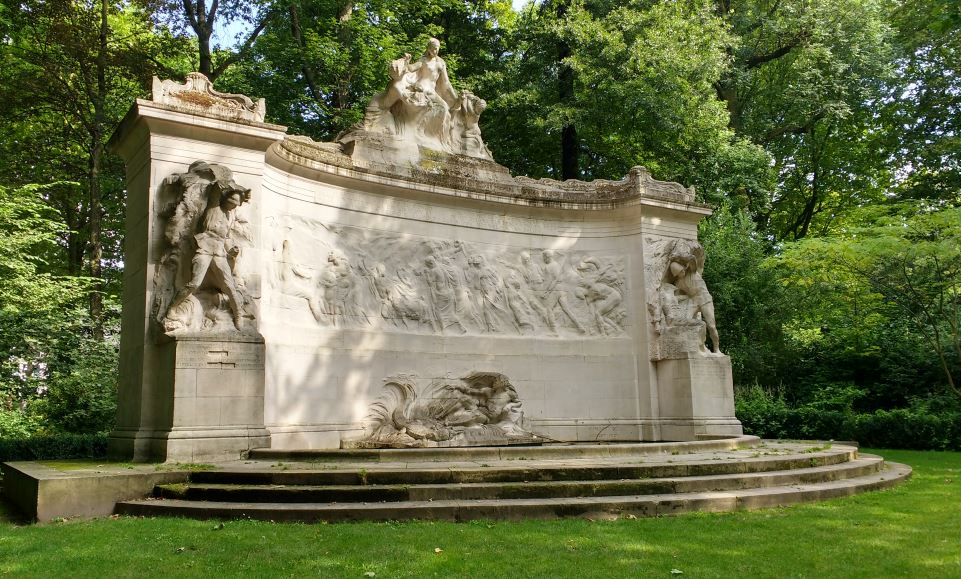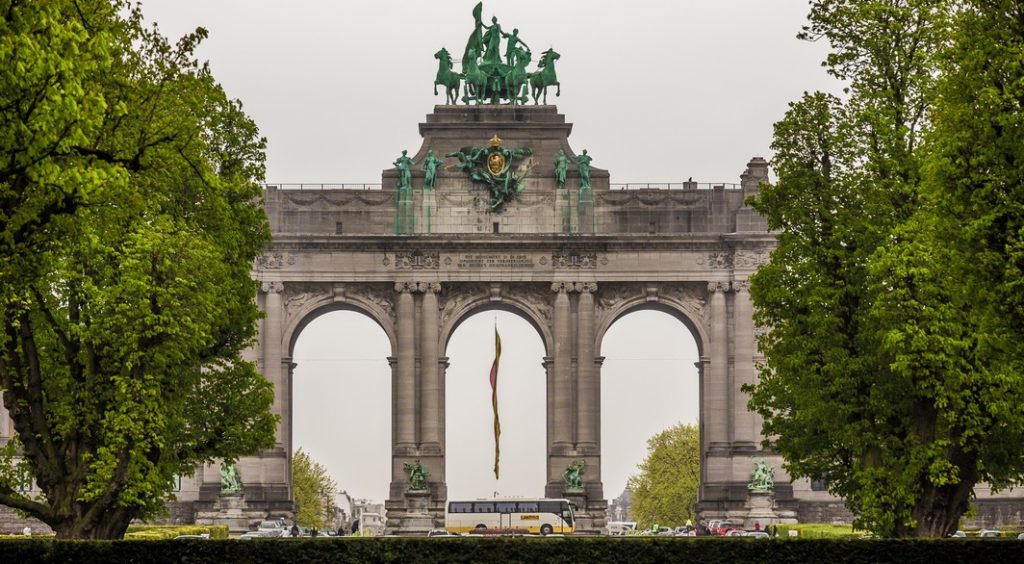Plans for the large-scale renovation of Brussels' Cinquantenaire Park, which will be the centre of festivities during Belgium's bicentenary in 2030, were approved by the Council of Ministers on Friday.
The site, originally designed to celebrate Belgium's fiftieth anniversary, is home to three museums, but it is also a popular meeting place for the inhabitants of Brussels and tourists alike. However, the site is in need of an upgrade, according to the federal government.
Belgium's 200-year independence in 2030 is the force driving the renovations — titled "Cinquantenaire Bicentenaire (50/200)" — as the site will be the most important location for the celebrations in light of this occasion.
"This project embodies the richness of our country's identity and history. It symbolises Belgium's role at the heart of Europe," Prime Minister Alexander De Croo stated. Some €156 million has already been earmarked via the federal recovery and investment plan, for the modernisation of the site.
The museums, buildings, the esplanade and the park itself will undergo a facelift with the aim of giving the site a cultural, civic, European and green future, as well as tackling its colonial past, and shedding its "outdated reputation."
"The park once hosted many expositions and the 50th anniversary of Belgium was celebrated through the park, but the site has since lost its link with the city," Thomas Dermine, State Secretary for Strategic Investments and Science Policy, who launched the initiative, said during a press conference on Friday.
Présentation du "Projet 50/200" de modernisation du Cinquantenaire dans la perspective du Bicentenaire de notre pays 🇧🇪
Presentatie van het ‘project 50/200´ voor de modernisering van de Jubelparksite, in aanloop naar het 200-jarig bestaan van ons land 🇧🇪 pic.twitter.com/HzE5RkV0gf — Thomas Dermine (@ThomasDermine) April 1, 2022
Tweet translation: "Presentation of the '50/200' project for the modernisation of the Cinquantenaire Park site, in the run-up to the 200th anniversary of our country."
The project, which was launched at the end of 2020, involves various levels of several governments, from the federal government to the regional government, the City of Brussels and even the European Commission, which is working to establish itself permanently in the city's landscape.
Dermine stressed that, although the project works towards the bicentenary in 2030, works are already in progress, especially on the buildings. Last week, the federal state's property manager launched the final phase of the large-scale roof renovations of museums in Parc du Cinquantenaire — a total area of more than 31,000 m² in total or 6 football pitches were tackled — which first started in October 2018.
Drop in visitors
The renovations also come in light of the fact that, despite the park being very popular, the museums located there experienced a slump in the number of visitors, according to Le Soir.
"The park is well visited today, but the museums are much less so. We have to find a way to bring people back to the museums," Bozar's former director Paul Dujardin said.
He is leading the advisory group set up last summer, including the directors of the museums and other external experts, that has been tasked with analysing current issues and discussing possible future uses for the site. It has now issued numerous recommendations in a damning report.
When it comes to the museums, it stated that the buildings were "in poor condition," and needed to be thoroughly restored. It argued that the museums' identities need to be rethought and that synergies between institutions need to be better developed.
Looking at the park itself, the report stated "the circulation in the park needs to be rethought, the connection to the other cultural centres in Brussels needs to be established and the links with the neighbouring European district need to be strengthened."

The Tunnel Cinquantenaire opens up in the middle of the park. Credit: Belga
The site also scored poorly for its role in providing green space in the city, particularly as a result of the Tunnel Cinquantenaire, which cuts through the park.
The lack of hotels and restaurants was also criticised, as well as the "certain degree of insecurity is experienced and incivilities which was observed."
Colonial heritage
The advisory group's reports also pointed to the colonial symbols present in the park, and criticised the "lack of their contextualisation." The arches in Parc du Cinquantenaire, among others, were funded by the sales of ivory, rubber and timber plundered during King Leopold II’s ruling over Congo.

The Congo monument in the Parc du Cinquantenaire. Credit: Creative Commons
This was also brought up by Brussels’ working group on the decolonising of public spaces in the region, which in February presented its plan for systematic interventions. It argued for the creation of colonisation memorials in Parc du Cinquantenaire and proposed the removal of statues with links to this period in Belgian history.
Dujardin said the committee dreamed of a site that is accessible to all the communities living in this city "by making the park, which is frequented in trainers or with a beer in hand, attractive again. By transforming the esplanade into a citizens' agora. We have to put people at the centre of the park and make them want to enter the buildings."

